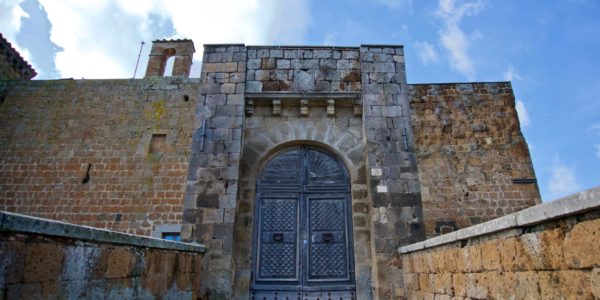THE HISTORY
Although according to scholarly tradition the origin of this town’s name is to be found in Celaeno, i.e. one of the three harpies in Greek mythology, it seems more likely that the etymology is linked to the medieval Latin word cella, which refers to the numerous caves dug along the tufa walls of the crag on which the village stands.
The recent archaeological finds in the Castle area, which date back to the late Etruscan period (6th-3rd century BC), are evidence of human presence in this site and the territory in the old days. The strategic communication road between Orvieto, Bagnoregio and Ferento, encouraged people to come and stop here.
The information on the oldest stages of the medieval settlement is still incomplete, however, it can be assumed that Celleno is one of the fortified villages built between the 10th and 11th centuries by the Counts of Bagnoregio, who held the lordship over this piece of land.
At that time, the village must have been made up of a number of dwellings at the end of the tuff crag, protected by cliffs on three sides, surrounded by walls and a small fortress, which now is the Orsini Castle, to protect the only access route.
In 1160 (when mention in the written sources was made for the first time), Count Adenolfo transferred the jurisdiction over Castrum Celleni to the Municipality of Bagnoregio. Following the destruction of Ferento (1170-1172), the Municipality of Viterbo began a rapid expansion in the Tiber valley, aimed at gaining control over the villages that belonged to the County of Bagnoregio. One of these villages was Celleno, which in fact in 1237 was one of the castles in Viterbo governed by a Podestà (high official) appointed by the local authority.
The situation will not change until the end of the 14th century, when, thanks to a concession of the Holy See, the village passed into the hands of the Gatti family, i.e. one of the most powerful families in Viterbo. In this period, the medieval fortress was completely renovated and converted into a fortified stately home that can still be seen today.
The Gatti family ruled Celleno until the last heir, Giovanni Gatti, who was killed by order of Pope Alexander VI (Borgia) for refusing to return the castle.
Outside the walls, both in the late Middle Ages and in the modern age, the village developed above all close to the church of Saint Roch.
At the beginning of 1500, the Gatti family fell from power, and Celleno became a fiefdom of the Orsini family. Interestingly, the castle still bears the name of this family.
It is only towards the end of the 16th century that the Church could include Celleno – a strategic place – into its possessions up to the Unification of Italy.
In the modern age, Celleno was often hit by earthquakes and landslides. The first testimonies of this can be found in the 1457 Statute, which says that it was forbidden to make new excavations along the cliffs, and that the inhabitants’ task was to maintain the underground structures to avoid dangerous infiltration in the subsoil.
Several earthquakes and landslides – such as those in 1593 or 1695 – caused considerable damage such as the collapse of the castle’s fortified tower. In the early 30s a series of earthquakes hardly hit the north side and this convinced the authorities to give up the recovery of the old Celleno, which continued to lose population. The centre was gradually moved to about one mile away, along the road towards the Teverina road. Therefore, for socio-economic reasons and the unstable slopes, the original medieval settlement was finally abandoned in the 50s.
Today Celleno is a small and charming “ghost village”.























